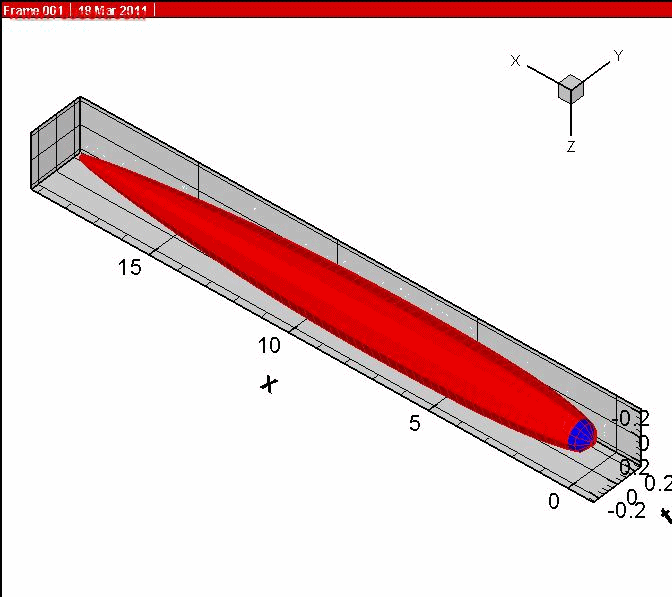|
|
| |
Projects : Supercavitation |
|
|
|
|
|
 |
| |
 |
Supercavitation is a cutting edge technology under research currently for improving the performance underwater vehicle. Supercavitation phenomenon helps underwater vehicles to achieve high speeds by reducing the amount of drag experienced by them. This phenomenon occurs when a body moves underwater with a very high speed, causing the local pressure to decrease below its vapour pressure leading to formation of bubbles which combine and form a cavity which engulfs the body. The formation of cavity is initiated by a cavitator mounted on the nose of the body. The reduction in skin drag from above reasons reduces the total drag which is the key factor to achieve such high speeds. This study poses many challenges since we deal with two different mediums. Development of cavitator shape, modelling of the cavity formed, developing a control law for the coupled body and cavity dynamics, efficient propulsion system are some of the challenges being faced. Since only the cavitator is in contact with water, it opens a new window of research on underwater sensors. In a nutshell, this technology has a lot of grey areas to be discovered and has lots of research opportunities in every part of engineering and science.
At Flight Lab, IIT Kanpur a full working model for vehicle-cavity coupled dynamics has been developed and powered/unpowered but uncontrolled supercavitating vehicle dynamics has been established with fins (3,4,6,8,12) and without fins. This model has been used for modelilng deep closure while water entry. At present work is being carried out for applying NDI technique to control the supercavitating vehicle.
|
|
|
 |
|
|
|
|
